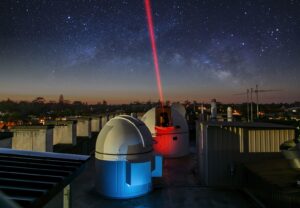El Niño and La Niña, they’re the brother and sister duo commonly associated with global weather patterns.
Despite having a major impact on the Earth’s climate, these Spanish siblings have humble origins.
FISHY BEGINNINGS
The use of El Niño as a way to describe weather changes originated from fishermen in Peru. They used the term whenever a warm ocean current appeared off the South American coast during December.
In Spanish, El Niño means ‘the boy-child’ but when capitalised, the term means ‘Christ Child’.
Peruvian fishers started using the term because the natural phenomenon was often observed at Christmas time.
The phrase – along with La Niña, which translates to ‘girl-child’ – is now commonly used to describe temperature changes in the Pacific Ocean and the atmosphere above it.
YOU’RE HOT THEN YOU’RE COLD
The Spanish siblings make up the El Niño Southern Oscillation (ENSO). This oscillation causes the changes in our weather patterns every 2–7 years.
El Niño is declared when the ocean and atmosphere temperature is warmer than usual, while La Niña is declared when the temperature is cooler.
This dynamic duo mainly impacts Australia’s east coast, but WA experiences some of it too.

tenor
MARGE! THE RAINS ARE ‘ERE!
La Niña generally brings widespread rain and flooding.
Western Australia can bear the full force of this wild weather, particularly in the northwest of the state during cyclone season.
During La Niña, there’s a general increase in the number of tropical cyclones in Australia, with twice as many making landfall than during El Niño years.
So when the Spanish sister is in town, prepare to batten down the hatches!

GIPHY
DRY AS A BONE
In contrast, El Niño generally brings warmer and drier conditions. And, WA doesn’t feel the impact as much as the eastern states.
However, WA is affected by a similar system called the Indian Ocean Dipole (IOD). When positive, this system can decrease rainfall and increase the dryness caused by El Niño.
HOT BOY-CHILD SUMMER
Currently, Australia is strapping in for El Niño to stay for the upcoming months. The IOD, while currently neutral, is on track to become positive.
When you combine this with increasing global ocean temperatures fuelled by climate change, the effects of the impending El Niño could become very significant.
So whether you’re in the mood or not, it looks like we’re going to have a hot-boy summer – literally.

GIPHY









